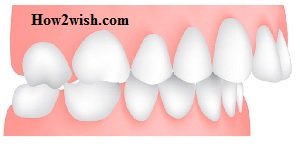Let’s pay attention to the problem that is relevant for almost 80% of Russians and Correcting Malocclusion in an adult. Let’s figure out how to correct the wrong bite in an adult because it is quite possible to align your teeth not only in childhood. Consider effective ways orthodontists can make their patients’ smiles beautiful and healthy.
We will try to pay maximum attention to the features and differences between the methods so that, if necessary, you can choose the most suitable one for you. And be prepared for the fact that the final decision will still have to be made together with the doctor. Because the type of intervention and the program of procedures depends on the nature of the pathology, only a specialist can accurately diagnose its degree and adequately assess the chances of success.

Types of malocclusion in an adult
- Open – the teeth either do not close at all, or a significant gap is visible between many of them;
- Deep – the exact opposite situation, that is, there is an overlap of about half the length;
- Mesial – the lower jaw, compared to the upper, is pushed forward;
- Distal – a problem opposite to the previous one;
- Cross – the right and left sides protrude unevenly, and the cutting edges close.
Other anomalies include:
- Diastema – a gap between the front pair of incisors;
- Tremas – noticeable gaps between the “neighbors” along the gum;
- Torsion – creeping sixes, fours, and fives on top of each other;
- Transposition – eruption in the wrong places, up to the palate.
Any of them is not only uncomfortable or bad from an aesthetic point of view, but also capable of provoking the appearance and development of a number of diseases. It develops against the background of genetic abnormalities and heredity and appears due to injuries and loss of bone tissue.
Signs of correct bite
Normally, the jaws are in close contact when closing. The upper teeth at the same time cover the lower teeth by about a third so that the palatine tubercles of the first touch the incisors of the second. There are no gaps between them both when the mouth is closed and during chewing. The proportions of the face are symmetrical.
Also among the characteristic features:
- Lack of speech defects;
- There is no clicking or other similar discomfort in the joint;
- The convenience of biting food.
And vice versa, if problems are observed in any of the moments just listed, this is an alarming bell and a reason to consult an orthodontist, and without delay, without waiting for the situation to worsen.
Why you need to straighten your teeth
Please note that the question is not whether it is worth correcting the bite – it just needs to be done, and for several reasons at once:
- To avoid increased abrasion, caries, and removal – when everything is normal, all incisors are evenly involved in chewing, and in case of violations, some work more, others less; the former lose enamel faster and chip off, the latter resist bacteria worse.
- To prevent diseases of the temporomandibular joints as a result of their mutual displacement. Such pathology is also unpleasant with bruxism, muscle spasms, clicking, and crunching.
- To protect the gums, tongue, and inside of the cheeks from injury caused by outstretched or tilted incisors.
- To grind food well during meals, not to create an additional load on the gastrointestinal tract, and not to provoke trouble with stool, enterocolitis, or gastritis.
- To prevent problems with the ENT organs and breathing – eliminate the focus of bacteria accumulation and not give a single chance to sore throat, sinusitis, or otitis media.
A lot about whether to correct the bite can be told by people who experienced complexes about their chin and then decided to have an operation or wear a bracket system. After medical assistance, they are much more willing to show their smile when communicating.
Diagnosis of anomalies
There are obvious cases, such as pronounced diastema or torsion, they can be seen on their own, standing in front of a mirror. But there are also minor violations that are no less dangerous to health, and only a specialized doctor can identify them.
Usually, hidden defects are easily recognized by a dentist-therapist – when he conducts a preventive examination, removes plaque, or puts a seal. Then he describes the problem and gives a referral to the orthodontist, who will already determine how to align the jaw, bite, and a pair of adjacent teeth. To do this, a narrow specialist will conduct a thorough examination of the patient’s mouth with computed tomography or x-rays.
An anomaly can also occur already in the process of life, for example, after injuries. Therefore, it makes sense to visit a doctor regularly, every six months, so that he either confirms that everything is in order or notices undesirable changes promptly, which are easier to stop at the initial stage.
Until what age is the correction real?
For many decades it was believed that the impact would be successful only in childhood, and at the time of primary and secondary school, not later. But with the development of orthodontics, things have changed. Today, achieving a healthy smile is not difficult at any stage of life – the main thing is that the person himself wants this so that he is ready to patiently follow several medical prescriptions.

What is the problem of correcting an overbite in adults
The jaw of a child is in the process of growth, so it is more plastic and easier to change. At the age of 15, it is generally easiest to do this: the incisors move relatively easily, and are fixed more securely – you have to wear braces for a year, no longer.
For a mature person, a similar procedure will take from 2 to 3 years, because his bones are already formed. It will not work to expand the space between the teeth, it will not work, and there is simply no free space. In some cases, you even have to remove, say, completely healthy eights.
Another nuance is that, say, at the age of 30, it will also be necessary to consolidate the achieved result, and it will take a long time – from 20 to 40 months. Sometimes people wear retainer structures for almost the rest of their lives. This is because the incisors are already “used” to their positions and tend to take them again after removing the braces.
Ways to correct bite: how is the treatment
They are fundamentally divided into two groups – with and without surgery. Consider each, starting with the most radical.
Surgical methods
They are relevant in the following situations:
- When the jaw has developed with severe anomalies;
- With significant torsion, requiring the removal of premolars;
- When you need to speed up the process of correction.
They come down to an incision in the bone tissue (of course, under anesthesia) and to move the teeth to the right places. After that – rehabilitation for 3 weeks and additional measures, such as wearing retainers, from 6 months to a year.
In special cases (if necessary, to get a quick result), a corticotomy is performed – the gums are slightly incised with a piezotome, which allows you to slightly push or tighten the upper or lower row.
It is important that any operations can be carried out only at the age when the jaw has already formed, that is, after 15-16 years. Contraindications are standard.
How to treat malocclusion in adults without surgery
In the absence of serious pathologies, conservative methods of exposure are chosen. Here, the methods are divided into several subgroups – consider each.
Alignment with aligners
They are removable caps made from a cast of the patient’s jaw. A person receives a whole set of them – from 3 to 5 pieces, which differ in elasticity. And wears around the clock – first the softest model, then – harder, and so on for 1-2 months.
Pulpitis treatment of milk teeth in a children
This device is good because it is made of transparent material: wearing it, you can safely smile. True, you have to get used to the constant pressure on the incisors.
Correction by trainers
Here’s how to treat a bite in the mouth, if it is simple. This is also a cap, it is simply installed on both jaws and is made of silicone. It is noticeable immediately, but it is enough to wear it 3-5 hours a day and during sleep so that aesthetic discomfort can be avoided without much difficulty.
Use of veneers
They are attached with dental glue to the outer surface of the problem teeth. With their help, they mask cracks and other defects but do not solve the issue of functionality. According to their service life, they are divided into 2 types:
- Ceramic and composite – up to 10 years;
- Zirconium – up to 15.
The use of plates
These are special orthodontic structures, with a silicone body and wire guides. Installed and removed relatively quickly and easily. When worn for a long time, gaps, expansion, and narrowing of the palate are eliminated, and displacement is prevented. But not particularly effective in twisting and other serious pathologies.

Braces alignment
Here is a universal answer to the question of how and with what it is possible to correct the bite of the jaw. There are a dozen of their varieties, and each is a whole system consisting of several locks fixed to the teeth with dental glue and rubber bands-ligatures that fix the arcs. The latter plays an important role – they form a healthy row, upper and lower, and gradually pull the incisors behind them, forcing them to take the correct positions.
Contrary to popular belief, wearing them is not painful, but rather unusual. At first, increased salivation is often observed – this is a normal reaction of the body. Worse, if they scratch the cheeks or lips – this is evidence of their incorrect or careless installation. Discomfort should not be tolerated – it is better to make an appointment with an orthodontist so that he performs a correction.
Which braces to choose
They differ between the method of action and the place of placement, although the generally accepted classifier is the material of their execution. Consider popular options.
Metal
They are remembered first of all when they talk about how to correct the bite because it was they who appeared before all the others, but even today they are quite relevant. Their locks and arcs are made of steel or alloys based on it.
Pros:
- Universal – help with any defects;
- Provide relatively fast correction;
- Strong, reliable, and inexpensive.
Minuses:
- Not very aesthetic – they immediately catch the eye;
- Often give an unpleasant aftertaste;
- Not always suitable for allergy sufferers.
Plastic
They became a kind of answer to the previous version. Made from environmentally friendly ingredients.
Advantages:
- Invisible;
- A small price will satisfy even a modest family budget.
Flaws:
- Strength is worse than that of metal;
- Stained after eating or drinking, for example, darken due to tea or coffee.
Ceramic
Orthodontists will remember them when they determine whether it is possible to correct an overbite and decide what is best for this. Today, this system of braces is very popular, its locks are just like tooth enamel in color.
Pros:
- Practically invisible – nothing prevents you from smiling broadly;
- Rarely irritate.
Minuses:
- Not as reliable as steel – they are easier to chip or break;
- Provide not the strongest fixation, with them the result is achieved longer;
- Unable to cope with serious pathologies.
Sapphire
Their locks are made of artificial stones, transparent and shiny. But the design and principle of operation are the same as for other options.
Advantages:
- Spectacular appearance.
Flaws:
- The most fragile – you need to handle them with care;
- Are the most expensive – you have to spend money on their purchase.
Combined
The most individual answer to the question of how to align the bite of teeth for adults is because they are selected depending on the characteristics of the jaws of a particular patient. Their upper arc is usually made of ceramics, and the lower one is made of metal.
Pros:
- Look quite aesthetically pleasing;
- The average price is at the level of plastic ones;
- Effective even in severe anomalies.
Minuses:
- Do not cope well with violations of deuces and ones;
- Not suitable if you are allergic to steel or steel-based alloys.
Lingual
Ordinary metal ones, but installed from the back of the incisors, that is, from the side of the tongue.
Advantages:
- Completely invisible;
- Perfectly correct mesial problems.
Flaws:
- Worsen diction;
- Even more expensive than sapphire;
- Useless with half of the defects.
How to care for braces
Having considered how and with what the incorrect bite of teeth in adults is corrected, it should be noted that when using any of the selected systems, several rules must be observed:
- Regular cleaning with a mono-bundle brush and irrigator.
- Use an indicator tablet to check the quality of plaque removal – just dissolve it, and the problem areas will immediately turn blue.
- Refuse too cold and hot drinks – temperature changes are harmful.
- Follow a diet, do not bite solid food, but cut it into pieces and chew it thoroughly.
Exercises for correction – myotherapy
You can strengthen individual muscles of the chewing apparatus and get rid of minor disorders. So, what to do if the wrong bite:
- Pull the upper lip down;
- Bite it with distal problems, well, or lower – with medial ones;
- Massage it with your fingers horizontally and vertically.
How long does it take to straighten teeth?
This will be determined by the orthodontist, having diagnosed and analyzed the problem and the degree of its development. In the general case, this process will take at least a year, because the bone should grow, and the result should stabilize. The last point is very important because after 2-3 months it seems that everything is in order with a smile, but this is a deceptive visual impression.
Individual feelings also play a role. Having determined how to straighten the bite, the dentist will fix the arches with a certain force. After that, the specialist will periodically adjust the pressure, pulling up the system during each subsequent appointment. Therefore, the patient needs, firstly, to immediately make sure that he is comfortable wearing braces, and that they do not injure his cheeks, lips, and tongue, and secondly, not to miss visits to the doctor.
At the initial stages, you do not need to be afraid if some incisors begin to stagger. This indicates that they are moving, occupying their positions. A whole range of hard and soft tissues are displaced. After about 6 months, the situation returns to normal.
How to choose the best leveling method
With the help of a specialist who knows exactly how adult malocclusion is treated. It is necessary to contact the orthodontist: let him examine the jaws, identify the problem and name the best way to solve it based on the causes of the anomaly, the degree of its development, the nature of the problem, contraindications and other individual characteristics of the patient. It is enough for one to mask minor defects with veneers, for the second – to wear a cap trainer for 2 months, and for the third, it will be necessary to select a combined bracket system.
The main thing is that the doctor’s decision will be responsible and competent. If he offers several approximately equivalent options, you should stop at the one that is most comfortable in terms of everyday life, terms of therapy, and personal preferences.
Saving results after correction
Is it possible to correct the malocclusion of teeth in adults without consolidating the progress made? No, because the “incisors” are used to occupying a certain position, and they will want to return to their original place. To prevent this, you will have to wear retainers. There are two types:
- Removable – the same caps, for the night;
- Fixed-wire structures, on the back of the upper and/or lower row.
The main inconvenience is that they are worn 1.5-2 times longer than braces, that is, from 1.5 to 3 or even 4 years. It’s not very burdensome, just annoying. And there are no problems with eating or hygiene procedures.
Summing up
We examined in detail how the bite is aligned to correct it in adults, how the results are fixed, as well as other important points. Now you have all the information for the preliminary choice of the way to straighten your teeth, and the final decision should be made after a visit to the orthodontist.
